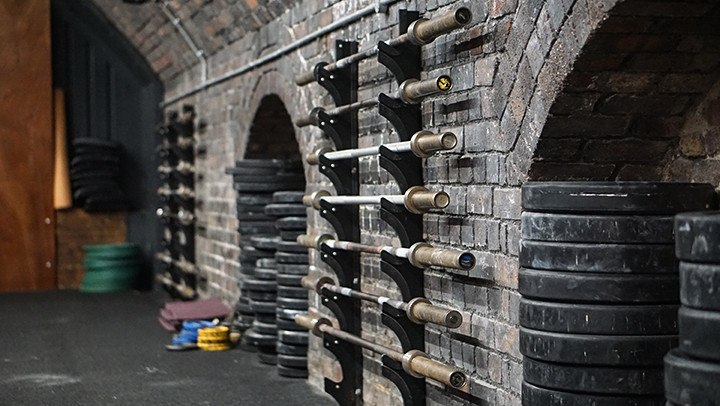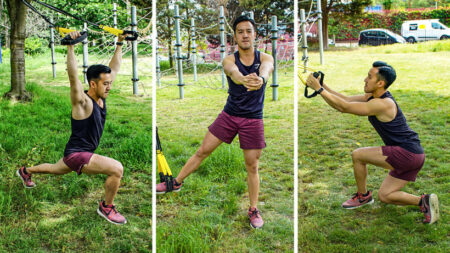Three weeks in and we're only just getting to grips with the acronyms
I’ve been at CrossFit London for a few weeks now; trying to uncover the essence of the popular workout format – to get past the stereotypes and explain what it’s like to embark on this fitness journey.
In my first diary entry we explored the first sessions in the Fundamentals series of workouts – the pre-Crossfit program you need to finish so you can do the lifting and movies safely and competently.
Now, halfway through these sessions, I’ve found that CrossFit is nothing like what I expected.
And in no particular order, here are some things I’ve learned:
- Try it out: The best Crossfit workouts (WODS)
CrossFit is a brain workout
AMRAP, WOD, push press, clean and jerk. Half the CrossFit battle is learning the names – let alone the techniques. And the techniques aren’t a walk in the park either.
The coaches always advocate taking notes on the names, which do tend to make sense after a while. But how you complete each of the moves is important – and even halfway through the Fundamentals program, we only have a vague handle on everything.

It’s highly technical. From the point of views of safety and effectiveness the coaches are extremely focused on how you complete a move.
And these guys aren’t messing around. There are elements of Olympic lifting and gymnastics that can make your eyes widen when they’re introduced to you. Handstands, kipping – each is broken down to its basic elements so anyone can start the journey, but tackling moves you’ve only seen in the CrossFit Games is pretty potent stuff.
You need to make time
One thing no one mentioned at the start is CrossFit is about consistency. At between £150 and £200 a month, your wallet is going to be a huge driver in making sure you’re in class regularly – but it’s also important in terms of progression.
Each week is themed, with rotating sessions of gymnastics, squatting, hinging and Olympic lifting.
This is great as it gives you chance to learn and hone skills through the week, and everything is revised on a Friday. But this really means that three sessions a week should be par – any less and you’re missing a lot of learning.

If you’re embarking on Fundamentals, make sure you have a clear month – not taking a week’s holiday. You might end up kicking yourself.
I actually started in a very busy life and work schedule – and wasn’t quite prepared for the shock from coaches when I said I could only make one session in a week.
Progression happens quickly – but it’s okay if it doesn’t
The upside of this intensity is that progression does happen pretty quickly. My first WOD (workout of the day) was brutal – almost like the mix of press-ups and sit-ups was designed to hurt me.
Press-ups are still my nemesis, but my body has already adapted to handle the sit-ups – and the WOD is now my favourite part of the class. The coach from my first session commented on how much I’d improved in six sessions – that was a nice boost.
The beauty of it is how the WODs will hurt people in different ways.
As a fairly weak-bodied runner, the elements of cardio allow me to recover a little. For others they’re the hardest part while they excel at pushing weight.
The WODs in real CrossFit are so much harder and longer – but already in Fundamentals I feel like the 10-minute WODs are achievable. I’m ready to be pushed more.

CrossFit is for (almost) everyone
Earlier this year I spent some time with a PT, and we worked on a lot of the movements covered in CrossFit. Deadlifts, squats, benchpress: it certainly set me up for some elements of CrossFit and arguably helped to alleviate some of the toll on my body, in turn making it easier to hit three sessions a week. It’s also meant some respite for the brain, from learning totally alien techniques.
In hindsight, while this has been undoubtedly useful, it’s by no means necessary.
I’ve come across a huge mix of people in my Fundamentals sessions, in terms of physiques and experience levels. Many are experienced gym-goers and lifters, looking for a technical challenge. Others seem to have little fitness history. It works for everyone.
It impacts your other workouts
Since starting CrossFit my running has gone out of the window. Session are down, milage is down – the functional fitness life is taking over.
You have to accept that as a CrossFitter, it’s a fairly all-compassing fitness lifestyle.
But when I have gone running – a Parkrun this week – I posted my fastest time of 2019.
I’ll be writing more about how my new regime has impacted my running in the coming weeks.
So, until my next update, as I lift and swing my way to a full-on WODing CrossFitter, thanks for reading.
For more info on CrossFit, read our full guide on what it is, where to do it and how to start.





